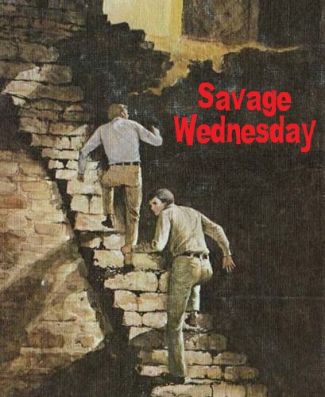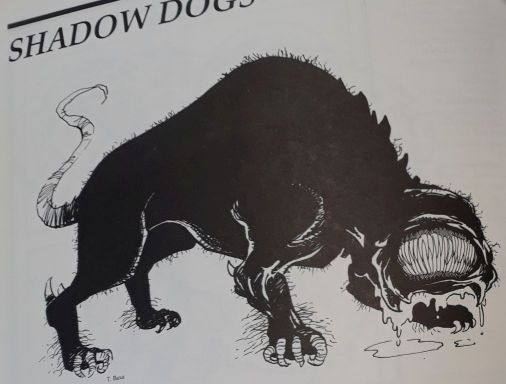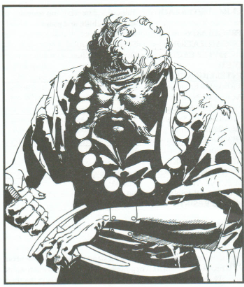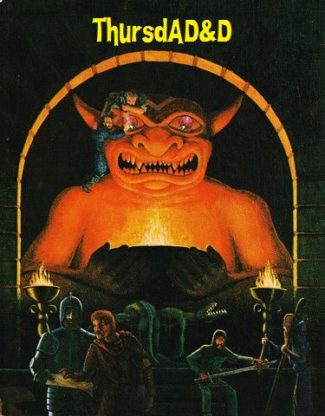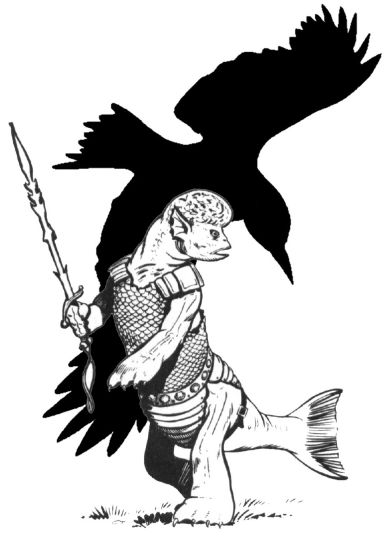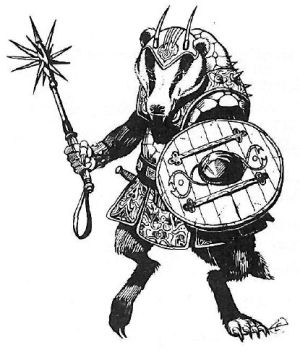This last Sunday, I re-restarted an AD&D game. The characters all live on a flying island and serve as squires to Lady Mirelyn. For their first mission, the characters were dispatched to the sleepy town of Saltmarsh to investigate why the town has been consistently behind on its annual harvest taxes for the past several years.
Turns out, the root of the problem has something do with a haunted house….
Anyway, I’ve got a small group with only one player new to tabletop RPGs. Amusingly enough (to me), our new player is a former student of mine, whom I taught way back when he was in middle school. He’s all grown up now, older than my son. It’s funny as he struggles to address me as anything other than “Mr. Chance”.
But I digress.
Given that most of my players are D&D veterans, I want to change up things a bit to try to recreate that sense of wonder we first had when we started playing and hadn’t read the entire Monster Manual. This means new monsters. Well, sort of. Today’s offerings aren’t really new. They come the 1981 printing of TSR’s Gamma World, which remains one of the greatest RPGs of all time.
Ark
Frequency: Uncommon
No. Appearing: 20-200
Armor Class: 5
Move: 15″
Hit Dice: 2
% in Lair: 20%
Treasure Type: Individuals L, M; D, Q (x5), S in lair
No. of Attacks: 1
Damage/Attack: 2-8 or by weapon
Special Attacks: See below
Special Defenses: Nil
Magic Resistance: Standard
Intelligence: Low to average
Alignment: Chaotic evil
Size: L (9′ tall)
Psionic Ability:
Attack/Defense Modes: Nil
Level/XP Value: II/28 + 2/hp (Leader-type or guard: III/125 + 4/hp. Chieftan: IV/165 + 5/hp)
Climate/Terrain: Any non-desert/tropical to temperate
Organization: Band
Activity Cycle: Night
Diet: Carnivore
Morale: Steady (11)
Arks are intelligent, brutal dog-men of great height but slender build. They live and travel in rapacious bands, wherein the largest and strongest dominate their smaller, weaker pack mates. Arks are generally on friendly terms with other evil races, such as badders. Arks are strong and fast. They have infravision. They speak their racial tongue, chaotic evil, and often (60%) badder and/or the common tongue.
For every 20 arks encountered, there will be a leader-type with 3+3 hit dice and 16 hit points. If 100 or more of these creatures are encountered, there will be a chieftan with 4+4 hit dice, 22 hit points, armor class 3, and +2 to damage. The chieftan has 2-12 guards with 3+3 hit dice, 16 hit points, armor class 4, and +1 to damage. If arks are encountered in their lair, there will always be a chieftan with 5-20 guards. The lair also contains females and young equal to 50% and 200% respectively the number of males present.
Arks are nomadic 80% of the time, but occasionally (20%) take up residence in an abandoned (or cleared) village, building, or cave. If nomadic, arks are quite likely (65%) to have 2-8 ark-hounds (treat as hyenas) or 1-6 ark-beasts (treat as hyaenodons) (80% and 20%, respectively). These beasts serve as pets and guards. If the arks have settled a location, double the number of beasts possible. Arks capture others for slaves and food, especially humans, as arks view human hands as a delicacy. Arks always have captives numbering 1 victim per 10 arks.
Arks are not dangerous only because of their numbers and their vicious natures. They also possess strange, magical powers. An ark who concentrates (treat the ark as motionless opponent as per DMG, p. 70) is capable of telekinesis with a range of 1″ per hit die, affecting 250 gold pieces of weight per hit die. Multiple arks can cooperate to increase the range and strength of their telekinesis, but the arks must be touching each other to do so.
Ark leader-types, chieftans, and guards can drain life energy from creatures of semi- or greater intelligence. This life leech ability can be used once per day. It affects a 3″ radius around the ark, and it affects all creatures in the radius (except the user). An affected creature loses 1-6 hit points (save versus death magic negates). The ark gains a number of hit points equal to the total damage inflicted (but this power cannot increase the ark’s hit points to more than twice normal value). Excess leeched hit points not destroyed in combat dissipate after 24 hours.
An ark chieftan can control weather as a druid once per week, but only after 1 turn of concentration. After the period of concentration, another 1-4 turns pass before the weather change is complete. This power weakens the chieftan, causing a loss of 3-10 hit points.
A peculiar aspect of ark psychology is their fear of large, winged creatures. Arks have -1 “to hit” and a -2 morale penalties against such creatures.
Badder
Frequency: Uncommon
No. Appearing: 40-400
Armor Class: 4
Move: 12″ (3″)
Hit Dice: 2-7 hit points
% in Lair: 40%
Treasure Type: Individuals K; C in lair
No. of Attacks: 1
Damage/Attack: 1-6 or by weapon
Special Attacks: Empathy
Special Defenses: Empathy
Magic Resistance: Standard
Intelligence: Low-average
Alignment: Lawful evil
Size: S-M (4′ to 5′ tall)
Psionic Ability: Nil
Attack/Defense Modes: Nil
Level/XP Value: I/5 + 1/hp (Leader or assistant: I/14 + 1/hp. Chief or bodyguard: II/40 + 3/hp.)
Climate/Terrain: Any land/any non-tropical
Organization: Tribe
Activity Cycle: Night
Diet: Omnivore
Morale: Average (10)
Badders are militaristic, humanoid badgers. They have a tribal society, the strongest ruling the rest, allowing fealty to the badder king. Badders enjoy dwelling in dismal surroundings, preferring subterranean habitats to others. Badders hate full daylight and attack at a -1 when in sunlight. They have normal infravision (60′ range). Badders are quick and agile, which in part accounts for their high armor class. These humanoids hate gnomes and dwarves, and will attack them in preference to other creatures. Badders are slave takers and are fond of torture. They speak their own tongue, lawful evil, and (80%) one or two other languages.
For every 40 badders encountered, there will be a leader and 4 assistants, all of whom have 1 hit die. If 200 or more badders are encountered, there will be the following additional figures: a sub-chief and 2-8 guards, each with 1+1 hit dice, armor class 5, and doing +1 damage. In their lair, there will be a badder chief and 2-8 bodyguards, each with 2+2 HD, armor class 4, and doing +2 damage. Also, there will be females and young equal to 60% and 100% respectively of the number of male badders encountered. Badders often have beasts in their lair, specifically 5-30 badgers (60%) or 3-18 giant badgers (40%), with these animals being present 60% of the time.
There is a 25% chance that any force of badders encountered will have 10% of its strength mounted on giant badgers. If this is the case, there will be an additional 10-40 giant badgers without riders.
Badders are fair miners, and they are able to detect passages which slope, unsafe areas, and approximate depth and direction between 50% to 80% of the time.
Exceptional badders (e.g. leaders, assistants, et cetera) have empathy. This allows them to detect the basic needs, drives, and/or emotioned generated by any unshielded mind within 1″ per hit die. This makes an alert badder difficult to surprise (1 in 6 chance). Badders can project emotions into the minds of creatures of semi-intelligence or less. This ability has a range of 3″ and affects a 1″ wide path. Creatures are permitted a saving throw versus spell to resist the effects, which last for 1-4 melee rounds per hit die of the badder. Exceptional badders use their empathic projection ability to frighten animals, entice prey, et cetera.
Tags: AD&D, Gamma World, Mirelyn's Skyrealm, monsters, ThursdAD&D
